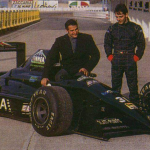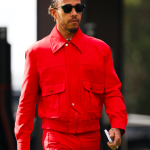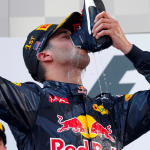
The absurd story of the Andrea Moda in F1
Between unlicensed drivers, tax fraud and arrests right in the paddock
October 14th, 2022
Sports history, especially when it comes to professionalism, has always tended inexorably to hand down winners. Sometimes, however, some of those actors and events that time often washes out of memory manage to carve out their own space in the annals for the grandeur of their feats - albeit unfinished - or for the din of their failures. The latter is certainly the case with the Andrea Moda Formula team, a participant in the Formula 1 World Championship held in 1992.
The birthplace of this curious page of the racing world was Andrea Sassetti, an Italian entrepreneur engaged in women's footwear with the Andrea Moda brand, who had glimpsed in Formula 1 the ideal showcase to enhance his brand. That's why in 1991, driven by this idea, Sassetti acquired materials and personnel from Scuderia Coloni - then fresh out of Formula 1-and commissioned third-party companies to design and supply the engines. Keeping in mind that the scuderia was intended to be the on-track reflection of a brand originally operating in the fashion industry, the unique style and elegance of the full black livery, first unveiled at the 1991 Bologna Motor Show, along with the overalls of the drivers chosen at the beginning of the adventure: Enrico Bertaggia and Alex Caffi.
Dark, however, beyond the bodywork of the race cars, was also the brief sporting interlude of the Andrea Moda Formula. Showing up at the qualifying of the South African Grand Prix with two cars not ready yet, the Italian team's drivers could not go beyond a few laps in free practice because they were disqualified, as Sassetti felt that he did not have to pay the $100,000 entry fee, which he believed he had inherited by right from Coloni. Later, at the Mexican Grand Prix, the cars were unable to compete following a delay in parts delivery. The settled tensions then exploded in the dismissal of both Bertaggia and Caffi, who were replaced by Perry McCarthy and Roberto Moreno.
The first unhappy performance on the Andrea Moda S921 track was in Brazil, where the best time set by Moreno - the only one on the track, since McCarthy did not have an FIA super-license - was 15 seconds slower than the penultimate one, failing to make it past the pre-qualifying barrier. For the French Grand Prix, the team was unable to get to the Magny-Cours circuit because of a trucking strike; for the following Great Britain GP, McCarthy took to the track on rain tires during a scorching sunny afternoon because it was the only train available that weekend. The only race the Andrea Moda Formula was actually able to take part in was Monaco, which was not completed due to an engine failure on lap 11.
Logistical problems and staff shortages continued to shadow the steps of Sassetti's fledgling stable, so much so that to make up for the lack of personnel several times he was forced to call in workers from his shoe factory. But none of this can rival the worthy conclusion of this affair, namely the arrest of Sassetti himself directly in the paddock of the Belgian Grand Prix under an international arrest warrant issued for false invoicing, which cost the team a lifetime disqualification from Formula 1, guilty of damaging its image, as well as the seizure of assets to repay suppliers.
The adventure of the Andrea Moda Formula nevertheless closely involved a slice of the public, especially the Italian public, which saw in that experience the realization of the dream of creating a reality in the most famous category of motors, albeit counterbalanced by the demonstration of how difficult it is to actually compete at certain levels. If you want to find out more about this actually crazy affair, the release of Last & Furious-a docufilm on the history of Andrea Moda Formula-is scheduled for 2023, at the end of a production work of no less than four years.

































